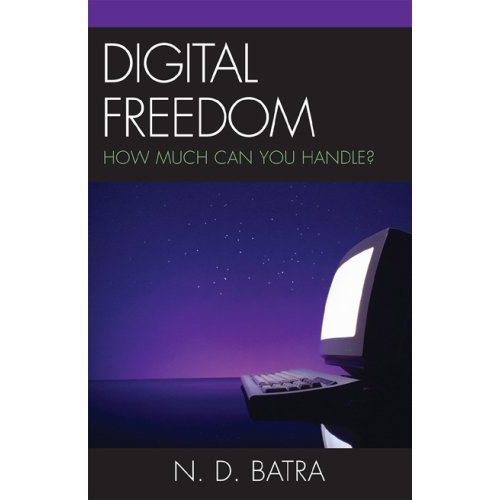Cyber Age/The Statesman
ND Batra
The US Supreme faces an interesting dilemma: If a technology is legitimate, can it be banned if its use creates some illegal consequences? In Metro-Goldwyn-Mayer Inc vs. Grokster Ltd., the Court has begun to consider the legality of peer-to-peer Internet file sharing, a dual use technology that is alleged to have created havoc for the entrainment industry, which creates and distributes copyrighted material such as music, movies, cartoons, etc.
A similar technology conundrum had occurred in the eighties when Sony put Betamax, its videocassette recoding technology, in the market and Hollywood began to experience near death syndrome, arguing that the technology would infringe copyrighted programs and destroy the business model on which it had thrived. In a 5-4 decision the Supreme Court ruled that Sony was not contributing to copyright infringement even if some users might be using it for illegal purposes. In fact the Court came up with a new legal expression that has stood the test of time: time shifting, which means that a woman might tape her favorite daytime soap opera, for example, and watch it later on at her convenience. Instead of damaging the financial interests of Hollywood, videocassette recorder, VCR, which ironically drove out Sony Betamax from the market, created a new revenue stream through movie rentals for Hollywood. Let’s keep in mind that technology creates new markets, even when it destroys old ones.
If the Supreme court decides that file sharing technology infringes on copyright, it would effectively redefine if not overturn its 1984 Sony Betamax ruling and jeopardize the development of burgeoning new technologies such as digital video recorder, TiVo, digital music recorders, iPod, and other innovations in the pipeline. Software and technology developers would worry if their new products would be held liable for copyright infringement. Justices Antonin Scalia and Stephen Breyer were right in questioning whether a hasty action to protect the entertainment industry from infringing technologies might have an adverse effect on the developing technologies. Justice Breyer mentioned the Xerox machine, videocassette recorder and the Gutenberg printing press (1455) among technologies that brought about revolutionary changes in our lives. Had they been stopped, the world would have been poorer.
On the other hand, if intellectual property rights including copyright cannot protect creators and companies that package their creative expressions, how could the intellectual rights of technology innovators and software developers themselves be protected? Their patents and copyrights too could be infringed. So the legal arguments of Silicon Valley and Hollywood against each other’s rights go beyond their immediate self-interests. Both need protection, but how much protection of intellectual property rights is too much? When does protection stifle creativity and innovation?
Since the development of Napster in 1999, music-recording companies claimed to have lost millions of dollars in CD sales because of Internet file swapping. Napster enabled users to browse each other’s files and share copyrighted music, but the users had to do so by going through its own central servers.
The court ruled that since Napster controlled its own servers, it could stop illegal sharing of files. Napster was shut down and has recently reappeared as a fee-based legal outfit. But other companies, Grokster, Morpheus, Kazaa, for example, learning from the mistakes of Napster, developed file-sharing systems that don’t use their own servers. They claim they have no control over how people use their file-sharing software, which has many legitimate uses. In October 2001, several music companies and movie studios sued Grokster and StreamCast Networks Inc. (Morpheus distributor) for contributing to the theft of copyrighted music and movies, but a California federal court judge ruled in 2003 that since file-sharing software could be used for legal purposes, it was protected under the 1984 Sony Betamax ruling. The Ninth Circuit Court of Appeals upheld the decision last August.
It is true that the electronic frontier battle is not only between Hollywood on the one side and Silicon Valley and college students in their dorms and teenagers in their attics swapping music and movies on the other. We should not forget authors, musicians, artists and moviemakers whose financial interests must be protected. Copyright was established as a limited time monopoly, an incentive for artist, writers, musicians, and others to create and develop new expressions and new modes so that society could benefit from their ingenuity and creativity. For a long time, unfortunately, the entertainment industry has been filing suits against individuals including teenagers and their parents for illegal swapping of music. Public has little sympathy for their highhanded methods of dealing with the problem. Hollywood bullied and lobbied Congress to increase copyright time limit from 28 years to 95 years now. Ali Baba is free but Mickey Mouse is in Disney’s captivity.
The Supreme Court has to find a new balance between the need for continuous technological innovation triggered by the Internet and the legitimate financial interests of the creative community. The crucial question is: Would the legal uses of file-sharing software, if given enough time, outweigh the illegal use in the long run? If so, the Supreme Court must decide in favor of the defendants, the file-sharing companies, Grokster and StreamCast Networks Inc., and others, because such a decision would compel the entertainment industry to develop new business models, which would make illegal file-sharing less attractive.
Shakespeare borrowed freely and thrived without copyright; and Gutenberg, the printer, thrived without patent protection. Nothing must be done to slow down the growth of the digital civilization.
Wednesday, April 06, 2005
Hollywood vs. Silicon Valley
at Wednesday, April 06, 2005 Posted by Narain D. Batra
Subscribe to:
Post Comments (Atom)

No comments:
Post a Comment